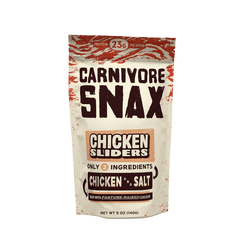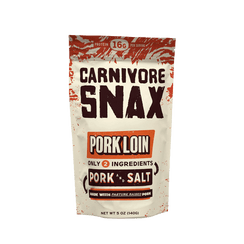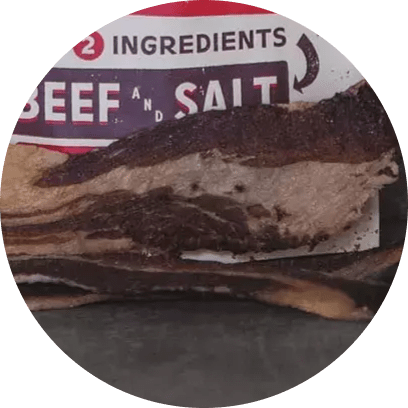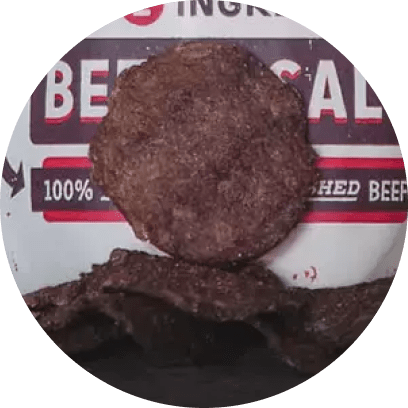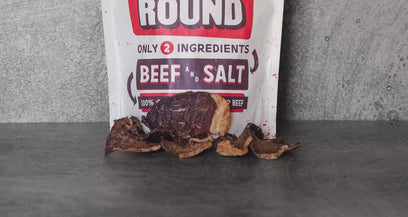THE CARNIVORE DIET BENEFITS




A battle currently rages in the sprawling fields of agriculture. It’s not just about crops and cattle, but about philosophies, futures, and choices that will shape our planet and plate.
On one side, we have the well-established, profit-driven conventional agriculture. On the other, the rapidly emerging, more holistic approach of regenerative agriculture.
As consumers, the onus is on us to understand the differences between - and the implications of - regenerative agriculture vs conventional agriculture.
After all, it's not merely about what's on our dinner plate, but how it got there, the story each morsel narrates, and the footprint it leaves behind. You may have heard passionate arguments from both sides, but let's cut through the noise.
Our goal in this guide is to take you on a journey that explores both methods, contrasts their techniques, scrutinizes their impacts, and ultimately, reveals which one stands tall for the benefit of us all. By the time you finish reading, you’ll have a solid grasp on why regenerative farming is the way of the future - the only way, to be clear.
And as you delve deeper into this agricultural showdown, we’ll also shed light on what your newfound realization means for you, and where you can source foods that align with a brighter, more sustainable future.
What is Regenerative Agriculture?
First things first…what is regenerative agriculture? At its core, regenerative agriculture is a paradigm shift, an approach to farming that places emphasis on rejuvenating and revitalizing the soil, ecosystems, and overall environment.
Unlike farming practices that can strip the land of its essential nutrients, regenerative agriculture techniques seek to enhance and enrich the land.
This leads to a suite of benefits of regenerative farming. How does regenerative agriculture work, though? Here are the principles these farmer abide by:
- Soil Health: Instead of treating soil as a mere planting medium, regenerative farming sees it as a living, breathing entity. Farmers prioritize practices that increase soil biodiversity, enhance its organic matter, and maintain its natural structure. The healthier the soil, the more carbon it can sequester from the atmosphere. We talk about this more in our guide to regenerative agriculture soil health.
- Water Management: The water benefits of regenerative agriculture are especially compelling, as capturing and retaining water is a cornerstone of this practice. By using techniques like swales and contour plowing, regenerative farms make the most of every drop of water, minimizing runoff and ensuring plants get the hydration they need.
- Biodiversity: Mono-cropping is out, and regenerative agriculture biodiversity is in. By planting a variety of crops and rotating them, the land is less susceptible to pests and diseases, reducing the need for synthetic chemicals.
- Animal Integration: Livestock isn't just for produce here. Animals, when grazed properly, can improve soil health, control pests, and contribute to the overall health of the ecosystem.
- Minimized Disturbance: Less tilling, less machinery, less interference. The land is allowed to heal and grow naturally.
As you’ll discover below, this is all in stark contrast to conventional farming. So, let’s look at the other side of the coin before we compare and contrast conventional vs regenerative agriculture.
What is Conventional Agriculture?
Conventional agriculture, which burgeoned post the Green Revolution of the 20th century, has been the dominant method of food production for decades.
With a primary focus on increasing food production to meet the demands of a growing global population, conventional farming primarily uses modern techniques, tools, and technologies.
- Input-Intensive: It relies heavily on synthetic fertilizers, pesticides, and herbicides. While these can boost yields, they can also lead to soil degradation and environmental pollution.
- Monoculture: Large swathes of land dedicated to a single crop. While this streamlines operations and maximizes short-term yield for that specific crop, it's susceptible to pests, diseases, and reduces biodiversity.
- Mechanization: Advanced machinery is used extensively for tilling, planting, and harvesting. While this increases efficiency, it can compact the soil and disrupt its natural structure.
- Short-Term Gains: The primary objective is often immediate profit. This can sometimes come at the cost of long-term land health and sustainability.
- Resource Dependency: Conventional methods can be water-intensive and depend on non-renewable resources, making them less sustainable in the long run.
In understanding these two methodologies, one might wonder, is one genuinely better than the other? And if so, in what ways? As we peel back the layers, diving into their differences, their impact, and their outcomes, the picture will become clearer.
But, as with all things, there's nuance, history, and evolution that has led us to this point of discussion. That being said, let’s compare and contrast regenerative agriculture vs conventional agriculture side by side below.
Regenerative Agriculture vs Conventional Agriculture: How are They Different From Each Other?
You may already be starting to get a sense of how conventional vs regenerative agriculture differ. If not, let’s be clear: it comes down to goals, the techniques employed to achieve those goals, and the outcomes that follow.
So, let’s unravel this mystery together below and start by looking at the main goals behind each method, as that’s where the divergence in methodology comes from.
The Diverging Goals: Quality and Ethics vs Profit and Volume
At the heart of regenerative agriculture is the profound belief that farming should prioritize the health of the soil, environment, and communities. The objective is to produce nutrient-rich food while enhancing the ecological systems that support life.
It's not just about farming, but about creating a sustainable cycle where every component, from the microorganisms in the soil to the final consumer, benefits.
Conventional agriculture arose from the need to feed rapidly growing populations. The aim was clear: produce more, faster.
The Green Revolution of the 20th century was instrumental in this shift, introducing high-yielding varieties of crops, synthetic fertilizers, and pesticides.
While these practices did lead to a boom in food production, they often sidestepped ecological health and long-term land sustainability in favor of short-term yields and profits.
A Contrast in Techniques: Working With Nature Rather Than Degrading It
Farmers practicing regenerative agriculture often describe their role as being a steward rather than a conqueror of the land.
Techniques are designed to mimic natural processes. Cover cropping, for instance, protects and nourishes the soil just as natural plant cover does in wild ecosystems.
Companion planting, another technique, uses plant combinations that benefit each other, just as they would in diverse natural landscapes. There is also the use of regenerative agriculture fertilizer, which puts the outputs of the land back into it as inputs for future crops/herds.
Speaking of herds, regenerative cattle farming stands in stark contrast to commercial meat farming facilities. While regenerative farms aren’t crammed into cages or pens - they’re left to graze naturally as they did in history, leading to a healthier, happier life for them while contributing to better soil.
In conventional farming, nature is often seen as an adversary. Pests must be eradicated, and soils must be made to yield.
This approach results in practices like heavy tilling, which disrupts soil structure and releases carbon, and the use of synthetic chemicals that can harm non-target organisms and degrade soil health over time.
Now, this is where things start to become very problematic - as the outcomes of conventional farming are far from ideal.
Differences in Outcomes that Matter: For the Consumer, the Farmer, the Lands, and Everyone In-Between
Let’s look at the outcomes of regenerative agriculture vs conventional agriculture from four different lenses to be as transparent as possible: the consumer, the farmer themselves, the lands, and everyone in between.
- For the Consumer: Regenerative farming leads to foods that are often richer in essential nutrients, thanks to healthier soils. Conventional foods, while abundant, can sometimes have residue from synthetic chemicals and may not offer the same nutrient profile due to soil depletion.
- For the Farmer: Regenerative practices, though initially challenging to adopt, can lead to reduced input costs over time for better profitability and more resilient farming systems. Conventional farmers, on the other hand, are exposed to harmful chemicals regularly, have lower-quality working conditions, and tend to compete on price with thin margins.
- For the Lands: While regenerative agriculture boosts biodiversity, soil health, and overall ecosystem function, conventional methods can lead to soil erosion, reduced land fertility, and loss of biodiversity.
- For Everyone In-Between: Consider the communities surrounding these farms. Regenerative practices reduce water pollution and promote a healthier environment, benefiting local communities. Conventional practices, especially when improperly managed, can lead to pesticide runoff, water pollution, and other environmental issues.
Now, in case it’s not already obvious, we’ll put an end to this debate once and for all below. Which is better: conventional vs regenerative agriculture?
So, Which is Better: Conventional vs Regenerative Agriculture?
When pitting regenerative agriculture vs conventional agriculture, it's crucial to recognize the broader implications. Regenerative farming not only yields nutrient-dense produce, but it also nurtures the very soil it springs from, preserving its richness for generations to come.
This method, at its core, values the harmonious relationship between land and farmer. It seeks to heal the planet, rejuvenate exhausted soils, and replenish biodiversity.
In contrast, conventional agriculture, though undeniably productive in sheer volume, often sacrifices nutritional and environmental integrity for immediate returns.
Moreover, the economic longevity of regenerative farming is increasingly evident. Despite the initial challenges of transition, its long-term rewards include reduced dependence on costly synthetics and resilience against unpredictable weather patterns.
Additionally, as consumers become more informed, they're actively seeking out regeneratively grown produce, adding an economic incentive for farmers.
In weighing the regenerative agriculture pros and cons, it’s overwhelmingly obvious that this is the future of farming. The consumer gets safer, healthier, better-tasting food. Farmers make more money while enjoying better working conditions. We’re actively restoring our lands as a result, too.
All this sounds great in theory…does regenerative agriculture really work, though? It sure does. And the sooner you get on board, the better - for your own personal health and the sake of our lands! So, what now?
You Know Regenerative Agriculture is Superior to its Conventional Counterpart…Now What?
Having understood the undeniable benefits of regenerative agriculture, you might be wondering - what now? The path forward involves being proactive, making informed decisions, and supporting the regenerative agriculture movement.
This article is just a starting point. Dive deeper into books, documentaries, and research articles on regenerative practices. Understanding the intricacies will solidify your commitment.
Our blog is a great starting point, as you can learn more about why regenerative agriculture is important, how to do regenerative farming yourself, and the history of regenerative agriculture.
You can also take the time to learn how regenerative farming stacks up against other methods. We have similar comparisons of regenerative farming vs agroecology, sustainable agriculture vs regenerative agriculture, permaculture vs regenerative agriculture, and more.
Eventually, though, you need to turn your knowledge into action. That includes advocating for policy changes, sharing your newfound knowledge with others to press the issue near and far, and of course, putting your money where your mouth is. Literally.
The best way to support regenerative farming over conventional farming is by shopping with regenerative farmers directly at farmers' markets. You can shop with brands online who source their products through regenerative agriculture, too - like our carnivore chips.
These meat chips, or meat pastries as they’re often called, are sourced from the most elite, ethical regenerative farms in the country. These farms replicate nature's harmony, acting as carbon sinks and offering a compassionate environment for all their thriving animals.
From nurturing the livestock to processing the meat, every step is undertaken with the utmost integrity and without compromise. We have so many to choose from, too:
That being said, try our healthy meat snacks today and taste the difference firsthand! Because at this point, it’s time we brought this conversation on conventional vs regenerative agriculture to a close.
Final Thoughts on Regenerative Agriculture vs Conventional Agriculture
The choice between regenerative agriculture vs conventional agriculture isn't just a decision about which produce to buy or which farm to support. It's a declaration of the values we hold dear and the future we envision. Conventional methods, though widespread, have often been at the expense of our planet and our well-being.
In contrast, regenerative agriculture promises a synergy with nature, producing food that is not only nutritious but also cultivated with care and foresight. Embracing regenerative agriculture is an affirmation of our commitment to health, the environment, and the ethical treatment of both land and livestock.
As you step forward, remember the power your choices hold. By supporting regenerative practices, you're casting a vote for a healthier planet and a brighter future.
And if you're wondering where to start, consider our carnivore snacks, a delicious testament to the benefits of regenerative farming.













